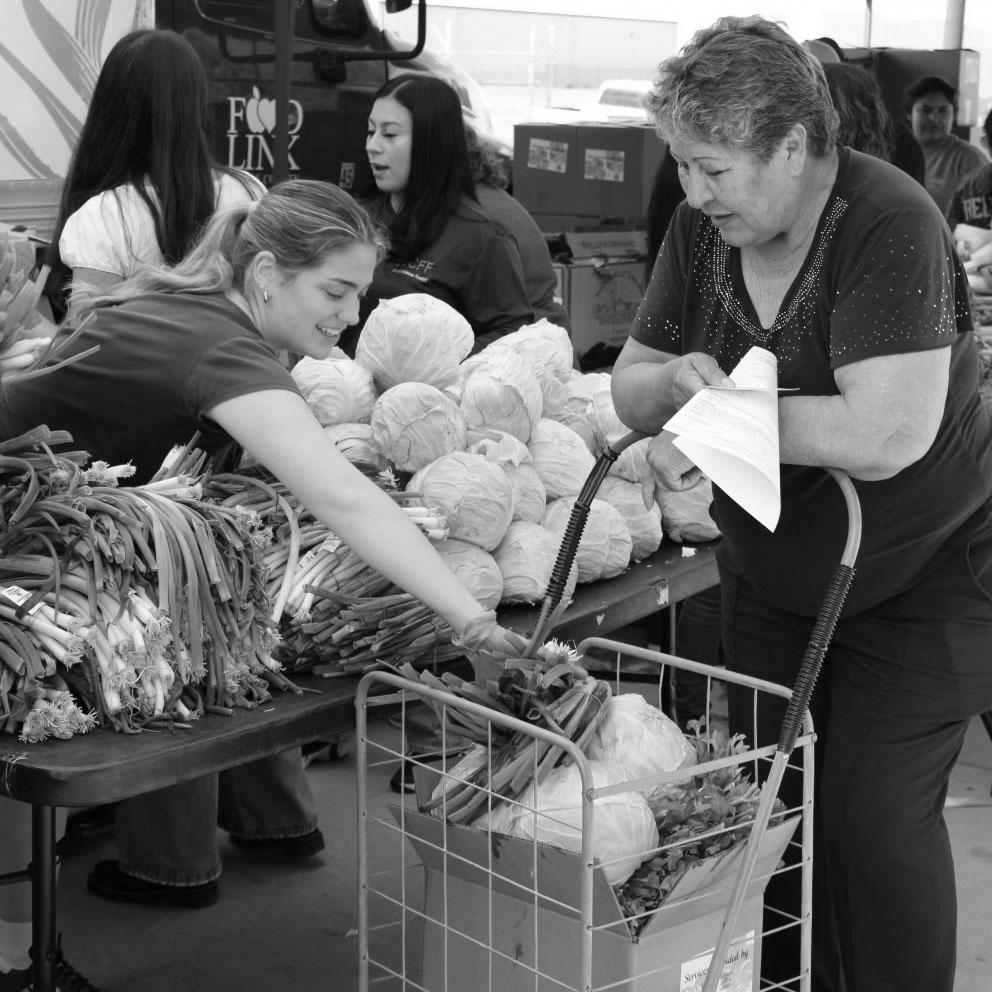This year during spring break, junior Yana Kim and some of her classmates traveled to Miami. Not for the sunny Florida beaches, but to learn how the city is planning for the impacts of climate change.
“We studied the effects of rising sea levels on the communities in Miami, and specifically how that’s going to affect the city’s land use and planning and residents’ access to affordable housing,” she said.
Kim is one of a growing number of Stanford undergraduates who are redefining spring break through a program called Stanford Alternative Spring Break (ASB) within the Haas Center for Public Service.
“Students typically go home during spring break or they can take a vacation. But this program is giving them an alternative to participate in a service-learning experience where they can give back to communities that they care about,” said Kim, co-president of ASB.
For one week, students disperse across the country to volunteer with nonprofits in underserved communities. From the Alaskan frontiers to the streets of the Big Easy, they’re meeting with locals, studying the issues impacting those communities, and experiencing America in ways they can’t in a classroom.
Learn more about Alternative Spring Break
Applications to lead a spring break 2026 trip open in May; applications for participants open the first week of fall quarter. Learn more about how to pitch a trip idea, or see an interactive map of this year’s trips.
Established in the late 1980s, ASB is a student-run program that’s funded by the Associated Students of Stanford University (ASSU). “It’s something that students have remained committed to and something they really feel is part of the Stanford culture,” said Kelly Beck-Sordi, associate director of programs at the Haas Center.
Kim described ASB as a “very hands-on experience” that utilizes a service-learning model. “Each day of the trip students meet and volunteer with organizations that serve the public good and work to address a particular social issue.”
Health care, housing, and climate change
This year, students organized 10 trips, including to California’s Central Valley, where they learned about the challenges facing farmworkers and immigrants, particularly with regard to accessing health care. In Boston, students visited schools and interviewed researchers and local leaders to learn how the city is addressing educational inequalities and student mental health challenges. Meanwhile, in New Orleans, students learned how locals prepare for increased disaster risk and the effects of climate change, like sea level rise.
Juniors Jason Cui (ASB’s co-president) and Isaias Martinez led a trip to Alaska, where many residents live in rural areas, making it difficult to access medical supplies and health care. The students traveled to Anchorage to interview public health officials, nonprofits, and clinics to learn how they’re addressing the problem. In the town of Nome, which has a population of about 3,000, they visited the only hospital accessible to residents near the Bering Strait, including several Indigenous villages.
“Working with the hospital staff, we traveled to village clinics that are tens of miles away to see how these remote environments affect people’s health,” he said.
Courtesy Alternative Spring Break
Back in Miami, Kim, her co-lead Erin Su, ’25, and their trip participants met with architects, urban planners, advocates for the homeless, and politicians to learn how they’re addressing sea level rise and its impacts. “Scientists predict that Miami is going to be underwater in less than 100 years,” Kim said. “So, we wanted to see how that’s going to affect the communities, the people that it’s going to drive out, and how it would impact access to affordable housing.”
The students then visited one of Florida’s mangrove forests. The tropical plants are native to the state and are valued for their ability to reduce storm surges and provide an ecosystem for the surrounding marine wildlife. But due to factors related to climate change, the local mangrove population has been in dramatic decline in recent decades, so the students got to work.
“We worked with our community partner, the Urban Paradise Guild, to plant and restore some of the native mangrove species, which have historically served as a first line of defense against flooding,” Kim said.
Spring break, a year in the making
Planning for the ASB trips begins the year prior, with students pitching ideas for trips in May. Students whose trips are approved become trip leaders and are enrolled in EDUC 98, a fall quarter 1-unit service-learning practicum (taught by Kim, Cui, and Pete Cerneka, associate director of student organizations and leadership development in the Office of Student Engagement) to learn how to design and plan a trip and develop a service-learning curriculum. Those leaders then teach a winter quarter class taken by students participating in their trip. While there is no final exam or paper, ASB hosts a symposium each spring where students can present a small project about their trip. This year, Cui and Martinez are presenting a short documentary about their time in Alaska.
Each trip accommodates 10 students, plus the two co-leads. The number of trips offered each year fluctuates depending on demand, and all trips occur within the United States.
“Alternative Spring Break is so much more than just time off from school,” said Cui. “It’s about connecting with new people and connecting with the important issues that affect the world today.”
“Stanford University, officially Leland Stanford Junior University, is a private research university in Stanford, California. The campus occupies 8,180 acres, among the largest in the United States, and enrols over 17,000 students.”
Please visit the firm link to site






